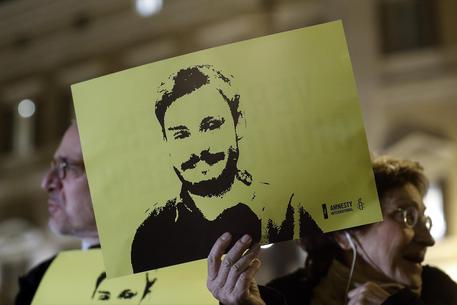(ANSA) - ROME, NOV 12 - A witness in the Rome trial in
absentia of four Egyptian security officers for torturing to
death Italian student Giulio Regeni in January-February 2016
told the court Tuesday that suspected members of the secret
services asked a flatmate of Regeni's for a copy of the
Cambridge doctoral researcher's passport just before Christmas
2015.
'Witness Beta', a female German citizen who shared the flat with
Regeni and an Egyptian friend, Mohamed El Sayed, told the court
in a secure-mode testimony that the latter had told her "that
one day in mid-December the police came to our house and asked
for a copy of Giulio's document.
"El Sayed was convinced that this check had been carried out by
National Security, the Egyptian secret service.
"I wasn't there but he had this idea and was scared by it".
National Security General Tariq Sabir and his subordinates,
Colonels Athar Kamel Mohamed Ibrahim and Helmi, and Major Magdi
Ibrahim Abdelal Sharif, are on trial on suspicion of torturing
to
death the 28-year-old Friuli-born Regeni from January 25 to
February 3 that year because they thought he was a spy due to
his politically sensitive research work on independent Cairo
street seller unions.
One of the Cairo street union chiefs reportedly fingered Regeni
as spy.
Regeni was tortured so badly that his mother Paola
Deffendi said she could only recognise him "from the tip of his
nose".
Deffendi said "all the evil in the world" was visited on her
son's body.
The four officers are on trial even though it has proved
impossible, due to Egyptian lack of cooperation, to inform them
of the proceedings.
His body, according to an Italian autopsy, showed major signs of
extreme torture: contusions and abrasions all over from a severe
beating; extensive bruising from kicks, punches, and assault
with a stick; more than two dozen bone fractures, among
them seven broken ribs, all fingers and toes, as well as legs,
arms, and shoulder blades; multiple stab wounds on the body
including the soles of the feet, possibly from an ice pick or
awl-like instrument; numerous cuts over the entire body made
with a sharp instrument suspected to be a razor; extensive
cigarette burns; a larger burn mark between the shoulder blades
made with a hard and hot object; a brain haemorrhage; and a
broken cervical vertebra, which ultimately caused death. (ANSA).
Regeni witness says secret service asked for passport copy (3)
Cops came to our Cairo flat in mid-December 2015 - Witness Beta
